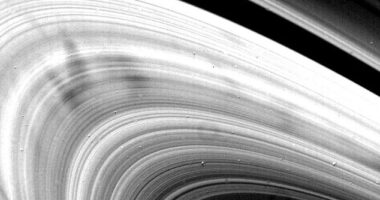FOR the first time, a Nasa spacecraft has captured images of the surface of Venus in the visible light spectrum.
The Parker Solar Probe took the snaps in July 2020 while passing the nearby planet on its mission to study the Sun.
Venus, 25million miles from Earth, has a surface temperature of 867F (464C), which is hot enough to melt lead.
Its toxic, cloud-cloaked surface is normally only visible through sophisticated radar or infrared imaging from orbit.
On Wednesday, Nasa released images taken during two PSP flybys with the spacecraft’s WISPR instrument.
WISPR is optimised for visible light, meaning it takes images in wavelengths that the human eye can see.
The snaps of Venus’s night side were an attempt to image Venus’ cloud layer but unexpectedly also showed surface features below.
They show Venusian features such as the continental region Aphrodite Terra, the Tellus Regio plateau, and the Aino Planitia plains, Nasa said.
Most read in News Tech
“The objective was to measure the speed of the clouds,” said WISPR project scientist Angelos Vourlidas, co-author on a new paper about the discovery and researcher at Johns Hopkins University.
“The images and video just blew me away,” he added.
Clouds obstruct most of the visible light emanating from Venus’ surface, but some still make it through.
On the dayside, this red light gets lost amid the bright sunshine reflected off Venus’ cloud tops.
However, on the night side, the WISPR cameras were able to pick up this faint glow caused by the intense heat erupting from the surface.
“The surface of Venus, even on the nightside, is about 860 degrees,” Wood said.
“It’s so hot that the rocky surface of Venus is visibly glowing, like a piece of iron pulled from a forge.”
Although the images don’t help us learn anything new about Venus’ topography – that was mapped using RADAR in the 1990s – they could help scientists learn more about the planet’s history.
That’s because different minerals conduct heat differently, allowing experts to investigate the makeup of Venus’ surface.
The research will be published this week in the journal Geophysical Research Letters.
Venus remains of particular interest to scientists after a recent study uncovered what could be evidence of life on the nearby planet.
In 2020, a team showed that a stinky gas called phosphine can be found in clouds 30 miles above its surface.
The colourless gas, which smells like decaying fish or garlic, only occurs naturally as organic matter breaks down in swamps or in some animal guts.
Cardiff University experts teamed up with American university MIT to trace the gas using two giant telescopes in Hawaii and Chile.
Their study, published in the journal Nature Astronomy, concluded phosphine, known as PH3, had been produced by either an unknown process … or from “the presence of life”.
The last probe to land on Venus was part of the Russian Vega 2 mission in 1985.
Nasa is planning to launch the Veritas mission in 2026 to orbit and map the surface of Venus.
In other news, a four-tonne chunk of a SpaceX rocket is on a collision course with the Moon, according to online space junk trackers.
Boeing has sunk $450million into a flying taxi startup that hopes to whisk passengers across cities by the end of the decade.
Personalised smart guns, which can be fired only by verified users, may finally become available to U.S. consumers this year.
And, scientists are embarking on a mission to unravel the mystery behind dozens of grisly child mummies buried in an underground tomb in Sicily.
We pay for your stories! Do you have a story for The Sun Online Tech & Science team? Email us at [email protected]
This post first appeared on Thesun.co.uk










